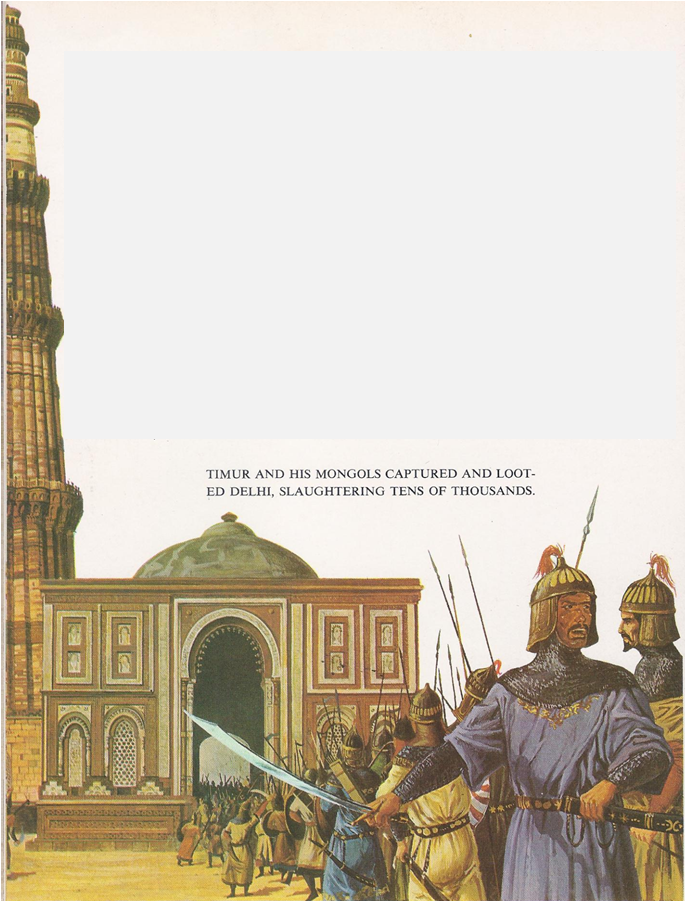WHEN Akbar died, the hope of a peaceful, prosperous India died with him. None of his successors was nearly so wise, open-minded, and farsighted. Even so, the Mogul Empire kept growing. The seventeenth century was, indeed, the height of Mogul power. Akbar’s son Jahangir reigned from 1605 to 1627. His name, which meant “grasper of the world,” did not fit him at all well, for he added only a little territory to the empire. Although he was clever and well-educated, Jahangir was also lazy and pleasure-loving. He was content to leave affairs of state to his Persian wife and her …
Read More »Tag Archives: Deccan
The Coming of Islam A.D. 711 – 1526
IN 711‚ when other Moslem forces were invading distant Spain, Arab soldiers fought their way to the mouth of the Indus River and captured the area called Sind. There they stopped. Nearly three centuries passed before Moslems again menaced India. In 998, a Turk named Mahmud, the amir of Ghazni in Afghanistan, burst through the Khyber Pass with an army of Turkish horsemen to sweep across the Punjab in the first of seventeen raids. Not even the savage, pagan Huns had been as bloodthirsty as these civilized sons of Islam. They hated the Hindus with a special hate. Believing in …
Read More »India: A Thousand Years of History A. D. 1 – 710
UNTIL 1947, when the Moslem state of Pakistan was carved out of its western and eastern corners, the entire triangle of land that points south from the Himalaya Mountains into the Indian Ocean was known as India. Geographers call this huge land mass a subcontinent, because it is almost completely cut off from the rest of the continent of Asia. The Himalayas on its northern frontier form a continuous barrier of rock, the highest in the world. “MOTHER GANGES” From the southern slopes of the Himalayas, two great rivers run down to the ocean. The valley of the Indus River, …
Read More »

